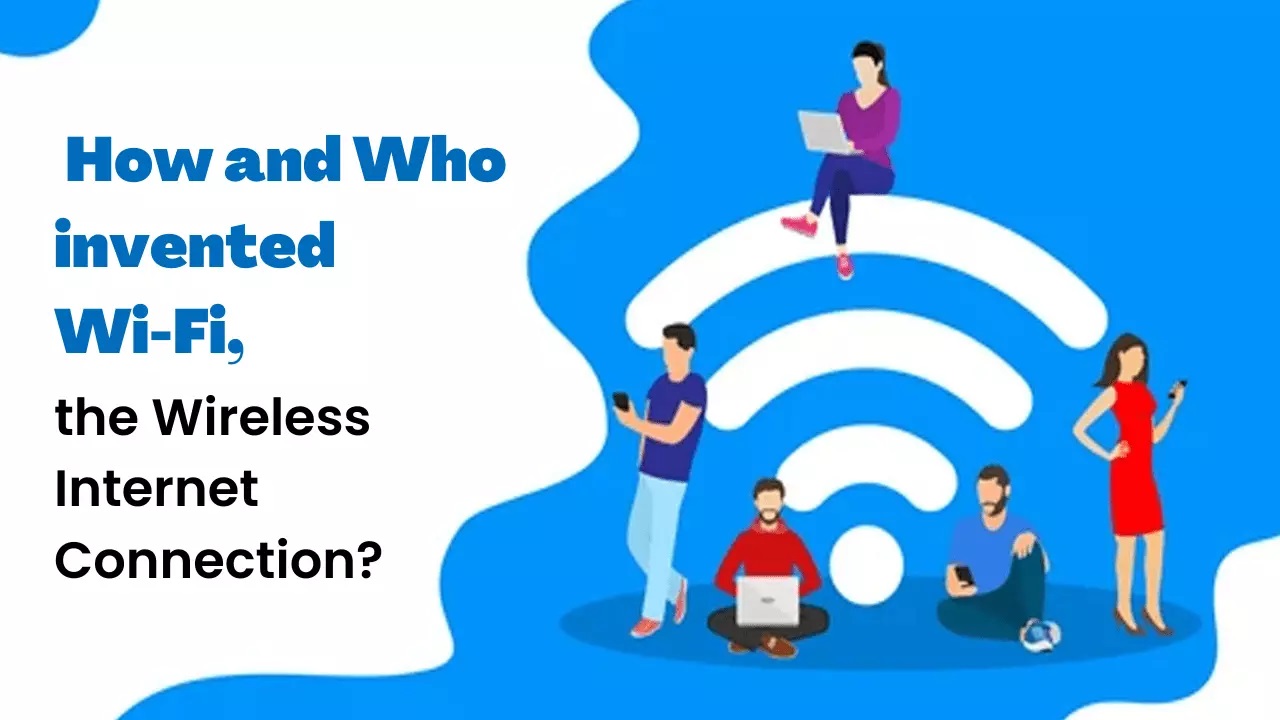How and Who invented Wi-Fi, the Wireless Internet Connection?
Wi-Fi has played an important role since its inception in keeping us connected at home or in public. We expect a standard level of connectivity everywhere we go and often rely on Wi-Fi to keep us productive, organized, healthy and even protected.
Recent advances in Wi-Fi technology have contributed greatly to the Internet of Things, allowing us to be more connected than ever before. But,
Here, we explored the history of Wi-Fi, where it started, what it has helped us achieve, and what it promises us as we become more and more connected to each other.
What is Wi-Fi?
Wi-Fi stands for wireless fidelity. Wi-Fi is a wireless network technology that allows computers, smartphones, iPads, game consoles and other devices to communicate using a wireless signal
Similar to how a radio station can tune into a radio station signal over a network, your device can receive a signal connecting it to the internet over a wireless network. Wi-Fi signals are high-frequency radio signals.
And just as a radio station's frequency is regulated, so are Wi-Fi standards. All electronic components that make up a wireless network (your device or router, for example) are based on one of the 802.11 standards established by the Institute of Electrical and Electronics Engineers and the Wi-Fi Alliance.
The Wi-Fi Alliance has trademarked the Wi-Fi name and promotes the technology. This technology is also known as WLAN, which stands for Wireless Local Area Network. However, Wi-Fi has certainly become the most common phrase used by most people.
How Wi-Fi Works?
A router is an important device in a wireless network. Only the router is physically connected to the Internet using an Ethernet cable. The router then broadcasts a high-frequency radio signal, carrying data to and from the internet.
The adapter in the device you're using receives and reads signals from your router, and sends data back to your router and out to the internet. These transmission lines are called upstream and downstream operations.
Wi-Fi uses radio waves to transmit information between your device and router using frequencies. Depending on the amount of data being sent, two radio frequency bands can be used: 2.4 GHz and 5 GHz. But what does this mean? Well, hertz is simply a measurement of frequency.
For example, let's say you are sitting on the beach and watching the waves crash on the shore. If you measure the time between each collision of the waves, you measure the frequency of the waves. Hertz is the frequency of a wave per second.
On the other hand, one GHz is one billion waves per second. (Thank goodness beaches aren't like that—probably not very relaxing.) The higher the frequency, the more data is sent per second.
The two Wi-Fi frequencies are divided into several channels to avoid heavy traffic and interference. The magic - informatics - happens when data is exchanged through these channels.
The first step initiated by the user in the process. When you access the Internet on your device, it converts the information you request into binary code, the language of computers. Everything computers do is based on binary codes, ones and zeros.
The router converts the frequencies back into a binary code, converts the code into the requested internet traffic, and the router receives that data through the hard internet cable.
This process repeats until you download this article or something else that requires the Internet. All this is happening with incredible speed. Most routers operate at 54 Mbps, which means that when such routers broadcast and send binary data, 54 million ones and zeros are captured or transmitted in one second.
The Inventor of Wi-Fi?
After understanding how the many components that make up Wi-Fi, you can see how difficult it can be to name a single inventor.
First, you need to check the history of the 802.11 (radio frequency) standards used to transmit Wi-Fi signals.
Second, you need to check the electronics involved in sending and receiving Wi-Fi signals. Not surprisingly, there are many patents related to Wi-Fi technology, although one important patent stands out.
Vic Hayes the "Father of Wi-Fi" because he was the chairman of the IEEE committee that created the 802.11 standards in 1997. Before the public heard about Wi-Fi, Hayes had set the standards that made Wi-Fi possible. The 802.11 standard was established in 1997.
Later, network bandwidth improvements were added to the 802.11 standards. These include 802.11a, 802.11b, 802.11g, 802.11n and more. This is what the attached letters represent.
As a consumer, the most important thing you need to know is that the latest version is the best version in terms of performance. So, this is the version you want all your new devices to be compatible with.
New ways to improve your Wifi router speed.










